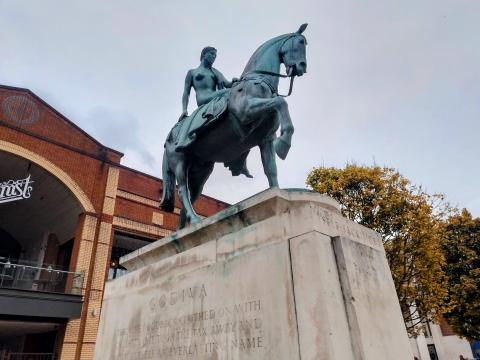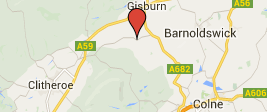Lady Godiva

In the centre of Coventry is a rather surprising statue of a naked woman riding a horse. This is, of course, Lady Godiva, wife of the eleventh-century Anglo-Saxon, Earl Leofric. It is said that she kept pestering the earl to lower his oppressive taxes on the citizens of Coventry. Exasperated, he told her that he would only do so if she rode through the town, naked. She seized the opportunity, but not without first ordering the townsfolk to be indoors in time for the journey. All but one obeyed, a tailor named Thomas, from whom the phrase ‘peeping tom’ derives.
It all sounds rather fanciful; Saxon noblewomen could be just as rapacious landlords as their menfolk, and public nakedness was no less shameful then than now. Some have suggested that her long hair came to her aid, as it does for the statue, whereas others suggest she may still have worn a penitential shift, a kind of undergarment or night dress. The nakedness may also refer to the removal of jewellery and other symbols of her aristocratic rank. So not as fanciful as it first appears, perhaps, though no less charming.
I note that depictions of the Saviour, Jesus Christ, as He hung upon the cross, provide Him with a garment for modesty. I resent popish insignia at the best of times, though I salute modesty in art. Nevertheless, victims of crucifixion were invariably exposed, naked and shamed. That the Lord of Glory, Jesus Christ, God incarnate, should die so ignominious a death and suffer so public a disgrace for my salvation is outrageously, shockingly marvellous; He was exposed that my sin might be covered and I might wear His clean robes of righteousness. This He did, not to merely relieve my tax burden, but to give me all things.
Nothing in my hand I bring,
Simply to Thy cross I cling;
Naked, come to Thee for dress;
Helpless, look to Thee for grace;
Foul, I to the fountain fly;
Wash me, Saviour, or I die.
-Augustus Toplady
- Log in to post comments


 Sunday Worship 10.45am & 6.00pm
Sunday Worship 10.45am & 6.00pm